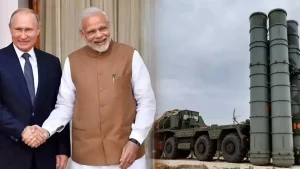The National Cadet Corps is the youth wing of the Indian Armed Forces with its headquarters in New Delhi, India. It is open to school and college students on voluntary basis as a Tri-Services Organisation, comprising the Army, the Navy and the Air Force.
CDS 1 2024 National Cadet Corps Lecture
The NCC was formed in 1948 (on the recommendation of H. N. Kunzru Committee-1946), and has its roots in British era uniformed youth entities like University Corps or University Officer Training Corps.
•Its history can be traced back to the ‘University Corps’, which was created under the Indian Defence Act 1917 with an objective to make up for personnel shortage in the Indian Army.
•The NCC also expanded later on to include the Girls Division in 1949 to provide equal opportunities to women willing to serve the country’s defences.
•Currently it has a strength of around 14 lakh cadets from Army, Navy and Air Force wings.
•NCC is the largest uniformed youth organisation in the world. It enrolls cadets at high school and college level and also awards certificates on completion of various phases.
•The NCC cadets receive basic military training at various levels and also have academic curriculum basics related to Armed forces and their functioning.
•Various training camps, adventure activities and military training camps are an important aspect of NCC training.
•The NCC falls under the purview of the Ministry of Defence and is headed by a Director General of three-star military rank.
Motto and Aim
•The motto “Unity and Discipline” was finalized for the NCC in 1980, reflecting its goal of molding disciplined and united citizens.
•NCC aims to be a cohesive force, uniting youth from diverse backgrounds and shaping them into responsible citizens.
Organizational Structure
•Directorate: There are 17 Directorates across state capitals, each led by an officer of the rank of a Major General from the three services.
•Division / Regimental Corps: Three specialized corps are independent of state directorates and report to HQ, headed by a Senior Officer of the rank of Lt. General.
•Group: Directorates have up to 14 Group Headquarters, headed by a Brigadier or equivalent, to manage and control the organization within the state.
•Battalion and Company: Groups control several units (Battalions), each consisting of companies led by Associate NCC Officers.
Key Points
•The NCC is led by a Director General (DG), supported by Additional Director Generals (A and B) and Brigadier level officers.
•The HQ is in Delhi, overseeing various levels of command across the country.
•There are specialized divisions for Army, Navy, and Air Force wings, and the organization provides honorary ranks to Vice Chancellors of universities to support NCC initiatives.
‘Puneet Sagar Abhiyan’
NCC and United Nations Environment Programme (UNEP) signed a MoU in the presence of Raksha Mantri Shri Rajnath Singh in New Delhi on September 22, 2022, to tackle the issue of plastic pollution and achieve the universal goal of clean water bodies through ‘Puneet Sagar Abhiyan’ and ‘Tide Turners Plastic Challenge programme’.
Pillar of India’s climate change resolve
•India will take its non-fossil energy capacity to 500 GW by 2030.
•India will meet 50 per cent of its energy requirements from renewable energy by 2030.
•India will reduce the total projected carbon emissions by one billion tonnes from now till 2030.
•By 2030, India will reduce the carbon intensity of its economy by more than 45 per cent.
•By 2070, India will achieve the target of Net Zero.




















